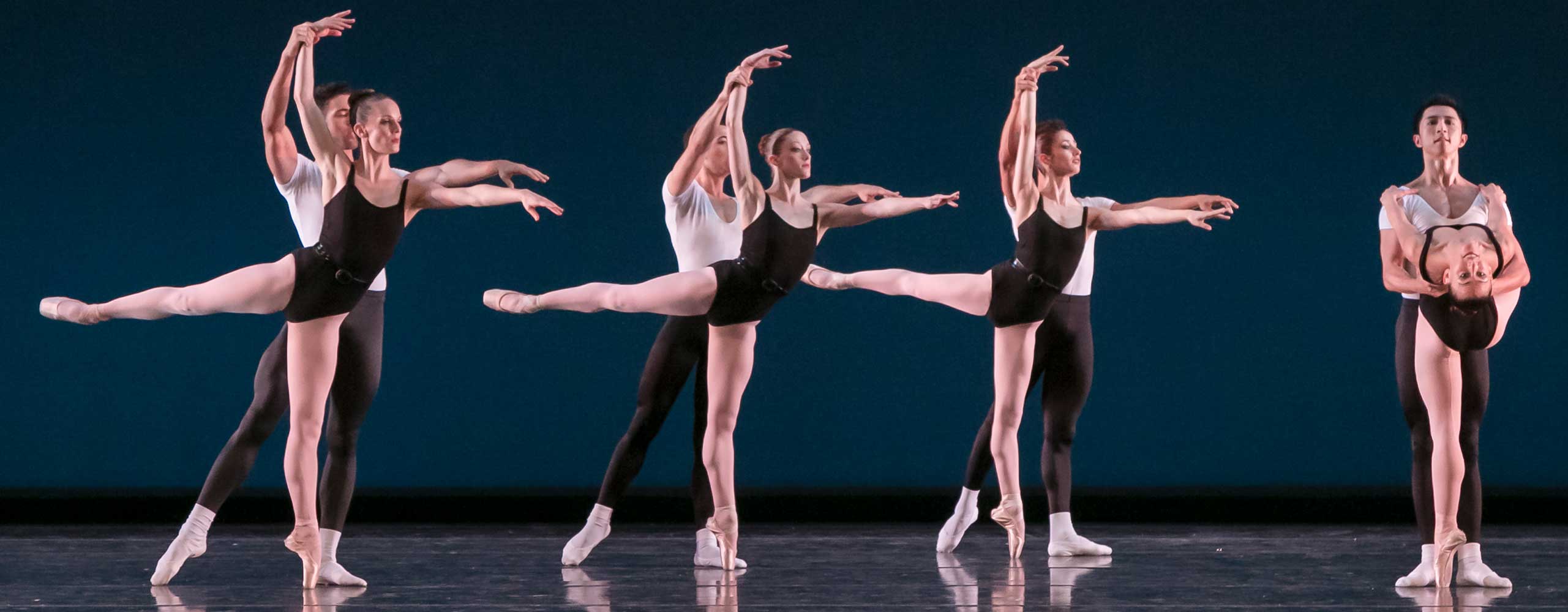
Choreography: George Balanchine
Music: Paul Hindemith
Costumes: Jean Q. Niedt with Kathleen Hornung
Paul Hindemith’s The Four Temperaments was not originally intended for dance. George Balanchine commissioned from Hindemith a work to be played by Balanchine and friends at private musical evenings. But after delighting in the warmth and vigor of Hindemith’s new score, Balanchine set about to create this ballet, first presented by Ballet Society in 1946. The original cast of dancers included Gisella Caccialanza, Tanaquil LeClercg, Mary Ellen Moylan, Elise Reiman, Beatrice Tompkins, Lew Christensen, Fred Danieli, William Dollar, Jose Martinez, Francisco Moncion, and Todd Bolender-who danced the third variation in the premiere, and many successive performances, to lavish critical acclaim.
The Four Temperaments, musically and choreographically, is based on the ancient idea that the human organism is composed of four humors of temperaments: Melancholic, Sanguinity, Phlegmatic, and Choleric. The dominance of one determines the human disposition.
Though this idea underpins the score and the dance, Balanchine did not intend a literal characterization of the humors. He is said to have cautioned his dancers that though the movement might be entitled Phlegmatic, “it is not to be danced phlegmatically.”
The work is a set of variations on three themes introduced by three couples in three opening statements. With each temperament, the original themes are presented again until at last, they begin to overlap and influence each other, culminating at last in a grand and soaring coda. Within each dance are some signals. In the tentative off-balance movements of the Melancholic Dancer, we recognize the seeds of despair. In the Phlegmatic Man, the defeat of overwhelming disinterest. The ballet’s complexities, however, reach beyond these cues. Balanchine’s effort is away from psychological significance and toward a visual translation of musical ideas.
The ballet sometimes seems an explosion of energetic innovations, a working vocabulary that makes much of jutting angularities, syncopation, and symmetricality. The stage is alive with novel footwork and brief spectacular solos. The ballet seems, on reflection, to be particularly and admirably American, given its technical prowess and high-energy demands. That The Four Temperaments seems today as fresh and exciting as ever confirms Balanchine’s artistic genius and creative vision.
